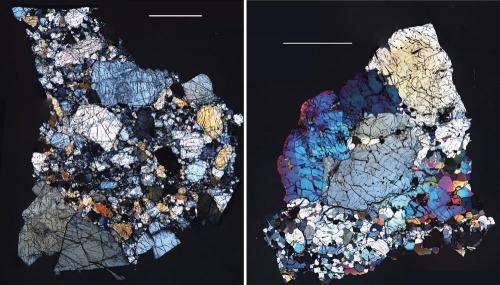The abundance of water in asteroid fragments

A new study could provide insights about the abundance of water in fragments from a famous asteroid.
The study focused on a mineral called apatite, which can act as a record of the volatiles in materials, including things like magma and lunar rocks. Volatiles are chemical elements with low boiling points (like water), and are usually associated with a celestial bodies' crust or atmosphere.
By looking at the apatite in meteorites, the team was able to determine the history of water in these rocks from space.
The meteorites they chose to study are known as the Howardite-Eucrite-Diogenite (HED) meteorites. These meteorites are a subset of the achondrite meteorites, which are stony meteorites that do not have any chondrites (round grains that were formed from molten droplets of material floating around in space before being incorporated into an asteroid).
HED meteorites only account for only 2-3% of the meteorites that are collected on Earth.
Studying the composition of meteorites can provide important clues about how asteroids and other rocky bodies form and evolve. Volatile elements influence processes important to planet formation, such as melting and eruption processes.
HED meteorites are especially interesting because scientists think they originated from the crust of the asteroid Vesta – a large body in the main asteroid belt that was recently visited by NASA's Dawn spacecraft. Behind Ceres, Vesta is the second largest object in the asteroid belt and is sometimes referred to as a protoplanet.

Vesta is a relic of the ancient Solar System and can help astrobiologists understand our system's formation and evolution. This information provides clues about conditions in the Solar System that led to the formation of a habitable planet – the Earth.
Interestingly, the team's results from the HED meteorites are similar to studies on the Earth and Moon, and could support theories that water in all three objects (Vesta, the Earth, and the Moon) came from the same source.
More information: The results of the study were presented at the 77th Annual Meeting of the Meteoritical Society (MetSoc) in Casablanca, Morocco, which took place from September 8-13, 2014. The program with abstracts is available from www.metsoc2014casablanca.org/
Source: Astrobio.net
This story is republished courtesy of NASA's Astrobiology Magazine. Explore the Earth and beyond at www.astrobio.net .





















